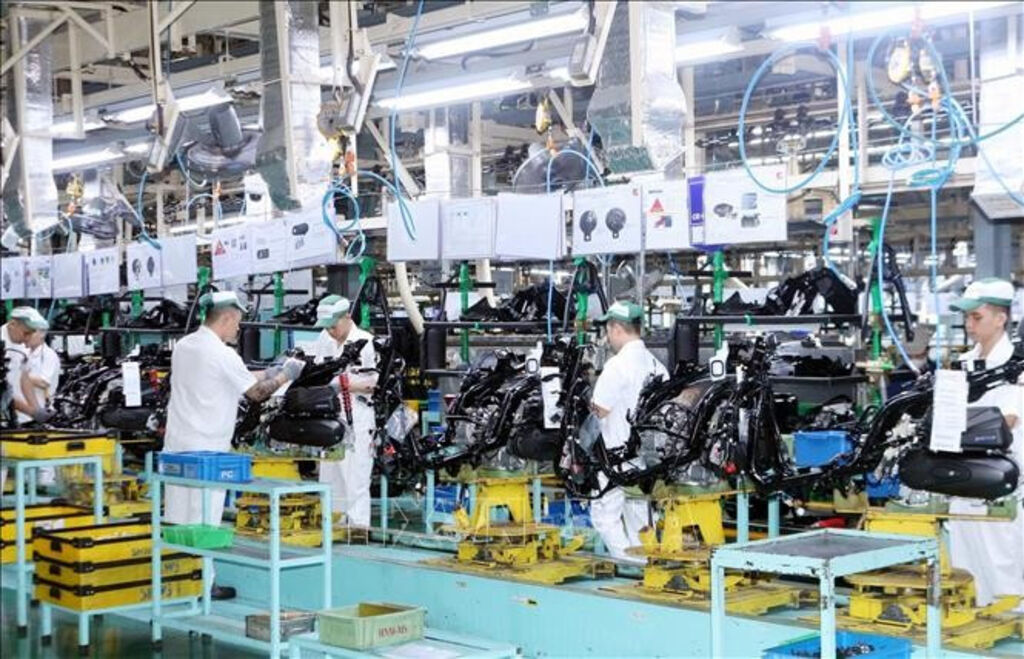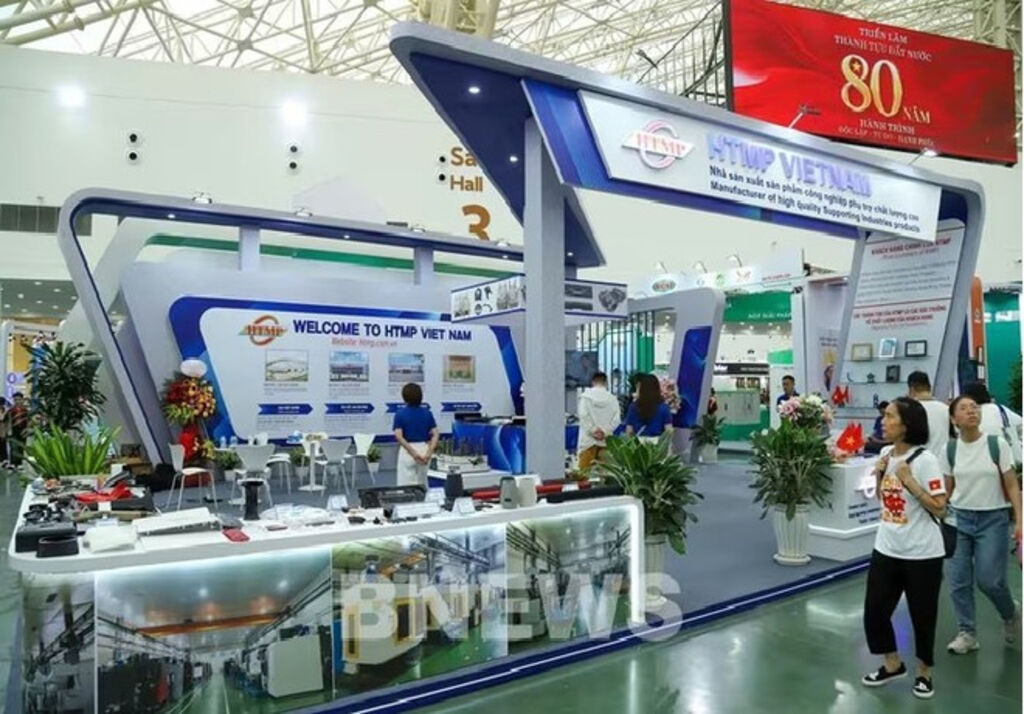 |
| Honda Vietnam's production line at Dong Van II Industrial Park__Illustrative photo: VNA |
Vietnam’s manufacturing industry is standing at a historic crossroads. Having long held a position primarily focused on semi-processing and assembly, the sector is now expected to “level up” to compete fairly in both regional and global markets.
This is an ambitious aspiration that comes with numerous challenges. According to experts, the road ahead for this industry demands a strong transformation, from macro-level policy shifts to individual enterprise efforts, along with breakthrough solutions that will enable the sector to make a leap forward and expand its reach.
Removing bottlenecks
According to the Vietnam Association for Supporting Industries (VASI), expectations for upgrading the sector are high, but in reality, it is facing many systemic challenges. These are not only internal barriers within enterprises themselves but also stem from the broader business environment and global fluctuations.
VASI Chairman Phan Dang Tuat stated that the first and most persistent bottleneck lies in the challenge of developing a high-quality workforce. Although Vietnam has an abundant labor force, the proportion of highly skilled engineers and technicians with deep expertise who are capable of meeting the demands of modern production lines remains low. According to many businesses in the industry, there is a significant gap between academic training programs and actual production requirements. Educational institutions tend to focus heavily on theory, lack modern practical equipment, and have instructors with limited real-world experience. As a result, many graduates require extensive time and financial investment for retraining once they enter the workforce.
This issue is even more pressing in sectors that demand high precision and advanced technology, such as mechanical engineering and component manufacturing. It hampers businesses from expanding production, slows down technological innovation, and increases reliance on foreign experts.
In addition, amidst deepening global integration, Vietnamese manufacturing enterprises face intense competitive pressure from both domestic and international players. Multinational corporations are imposing increasingly strict requirements in terms of quality, technical standards, and delivery timelines. Meanwhile, global economic disruptions, such as trade wars and geopolitical conflicts, further elevate supply chain risks.
According to experts, in response to these challenges, many enterprises have begun to undergo transformation, with focus on market diversification and greater transparency in their supply chains. The strategy of not “putting all eggs in one basket” is not only a smart business move but also a critical survival tactic to mitigate risks when major markets experience disruptions.
Transformation and the roadmap for breakthrough
In the face of significant challenges, Vietnam’s manufacturing industry is showing strong signs of transformation from mindset to action, with the goal of competing on a fair playground in the international market.
One of the core strategies being promoted by industry associations and enterprises is “localization” and “multi-dimensional linkage.” Localization not only helps reduce dependence on imported raw materials but also serves as a pathway to enhance production capacity and generate greater domestic added value.
 |
| Having long held a position primarily focused on semi-processing and assembly, the manufacturing sector is now expected to “level up” to compete fairly in both regional and global markets__Photo: VNA |
To achieve this, close collaboration among the public sector, private enterprises, research institutes, and educational institutions is key. The government must play an enabling role by designing strong incentive policies that encourage businesses to invest in technology and R&D. Training institutions need to reform curricula, increase hands-on learning, and align more closely with the practical needs of industry. Meanwhile, businesses must proactively partner with research institutes to develop new products and work with universities to train a workforce tailored to their specific needs, according to the VASI Chairman.
From the perspective of foreign direct investment (FDI) enterprises operating in Vietnam, Otsuka Tetsuhisa, board member of NC Network Japan and CEO of NC Network Vietnam Joint Stock Company, stated that Vietnam’s manufacturing enterprises have faced significant risks in recent times due to their reliance on just a few major export markets. Therefore, companies in this sector need to actively seek and expand into emerging markets, and make the most of the Free Trade Agreements (FTAs) that Vietnam has signed.
In addition, enhancing supply chain transparency through technologies such as blockchain and QR codes offers a long-term competitive advantage. This not only helps meet the stringent requirements of developed markets regarding traceability, labor, and environmental standards, but also builds global customer trust in the “Made in Vietnam” brand which signifies quality and responsibility, he stressed.- (VNA/VLLF)









